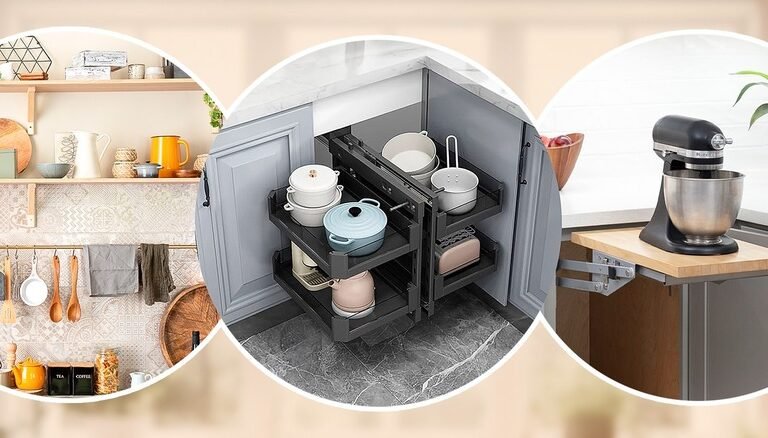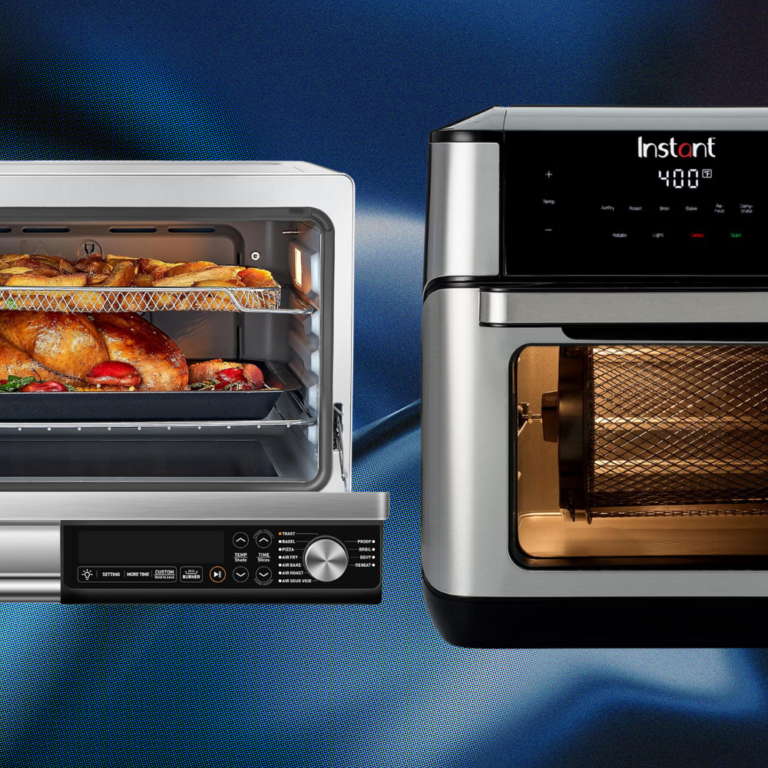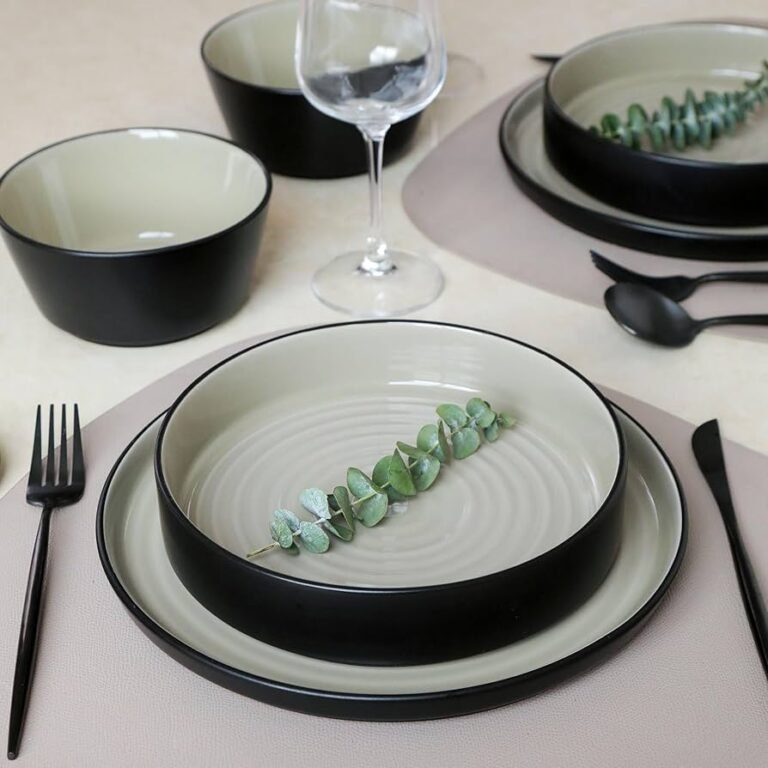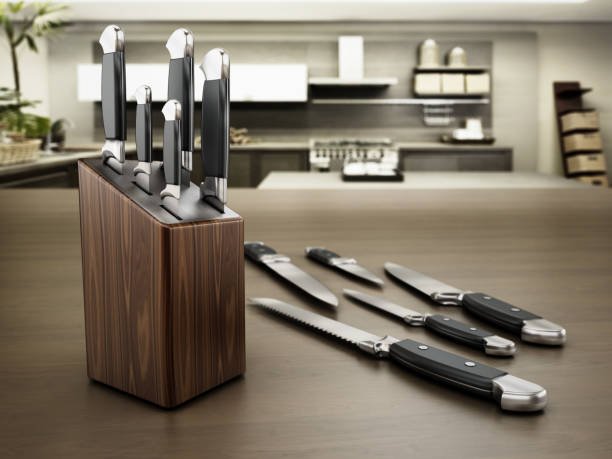
Choosing between an air fryer and an oven can be challenging when you’re looking to upgrade your kitchen appliances. Both cooking methods offer unique advantages, but understanding their differences will help you make the best decision for your cooking needs and kitchen space.
What is an Air Fryer?
An air fryer is a compact countertop appliance that utilizes rapid air circulation technology to cook food. Despite its name, an air fryer does not fry food in oil. Instead, it creates crispy textures by circulating hot air at high speeds around the food, much like a convection oven, but in a significantly smaller space.
What is a Conventional Oven?
A conventional oven is a traditional kitchen appliance that uses heating elements, either gas or electric, to warm the air inside a spacious cooking chamber. Unlike convection ovens, conventional ovens depend on natural heat circulation, making them ideal for baking, roasting, and preparing larger quantities of food.
Air Fryer vs Oven: Key Differences
Cooking Speed and Efficiency
Air fryers are much faster than traditional ovens. The compact cooking chamber and strong air circulation indicate:
- Preheating time: 2-3 minutes.
- Cooking time: 25-50% faster than conventional ovens.
- Energy efficient due to shorter cooking times.
Conventional ovens require more time but offer consistent results:
- Preheating time: 10-15 minutes.
- Longer cooking times, but excellent for batch cooking.
- Higher energy consumption for extended cooking periods.
Food Capacity and Size
Air fryer capacity is limited compared to conventional ovens:
- Typical capacity: 1-10 quarts
- Best for 1-4 servings.
- Compact design saves counter space.
- Limited to smaller food items.
Conventional oven capacity accommodates larger meals:
- Multiple racks for simultaneous cooking
- Perfect for family meals and entertaining
- Can handle large roasts, multiple dishes, and baking sheets
- Essential for holiday cooking and meal prep
Cooking Results and Food Quality
Air fryer cooking excels at creating crispy textures:
- Excellent for reheating leftovers
- Creates crispy exteriors without oil
- Perfect for frozen foods like French fries and chicken nuggets
- May dry out delicate foods if not monitored carefully
Conventional oven cooking provides versatile results:
- Superior for baking breads, cakes, and pastries
- Even heat distribution for consistent cooking
- Better moisture retention for roasts and casseroles
- Ideal for dishes requiring specific temperature control
Air Fryer Benefits
Health Benefits
- Healthy cooking with little to no oil required.
- Reduces calorie content compared to deep frying.
- Maintains food nutrients better than traditional frying methods.
Convenience Features
- Quick preheating and cooking.
- Easy cleanup with removable, dishwasher-safe parts.
- Compact size perfect for small kitchens.
- Digital controls and preset cooking programs.
Cost Efficiency
- Lower energy consumption per cooking session
- No need for large amounts of cooking oil
- Affordable countertop appliance option
Conventional Oven Advantages
Versatility
- Oven cooking methods include baking, roasting, broiling, and warming
- Temperature range typically 170°F to 500°F
- Multiple rack positions for different cooking zones
- Can accommodate various cookware sizes
Capacity
- Large cooking space for multiple dishes.
- Essential for holiday meals and entertaining.
- Batch cooking capabilities for meal preparation.
- No size restrictions on cookware.
Baking Performance
- Superior results for bread, cakes, and pastries
- Even heat distribution prevents hot spots
- Better humidity control for delicate baked goods
- Professional-quality results for serious bakers
Energy Consumption Comparison
Air fryer energy use:
- Average power: 800-1500 watts
- Shorter cooking times reduce overall energy consumption
- More efficient for small portions
Conventional oven energy use:
- Average power: 2000-5000 watts
- Longer preheating and cooking times
- More economical for large batches or multiple dishes.
Best Foods for Each Appliance
Air Fryer Specialties:
- Frozen foods (fries, nuggets, fish sticks)
- Vegetables (Brussels sprouts, broccoli, cauliflower)
- Protein (chicken wings, pork chops, salmon)
- Reheating pizza and fried foods
- Small batch cooking
Conventional Oven Excellence:
- Baked goods (bread, cookies, cakes)
- Large roasts (turkey, beef roast, whole chicken)
- Casseroles and lasagna
- Pizza (full-size)
- Multiple dishes simultaneously
Cost Analysis: Initial Investment and Operating Costs
Air Fryer Costs:
- Initial price: $30-$300 depending on size and features
- Lower electricity costs due to shorter cooking times
- Minimal maintenance costs
Conventional Oven Costs:
- Built-in installation costs: $500-$3000+
- Higher electricity or gas costs for extended cooking
- Professional maintenance may be required
Which Should You Choose?
Choose an Air Fryer if:
- You have limited kitchen space
- You cook for 1-4 people regularly
- You want quick, convenient cooking
- You’re focused on healthier cooking methods
- You frequently cook frozen foods or want crispy textures
Choose a Conventional Oven if:
- You have a large family or entertain frequently
- You love baking and need consistent results
- You prefer cooking multiple dishes at once
- You have adequate kitchen space
- You need versatile cooking options
Can You Have Both?
Many home cooks find that air fryers and conventional ovens complement each other perfectly. An air fryer serves as an excellent secondary appliance for quick meals, while a conventional oven handles larger cooking tasks and baking needs.
| Feature | Air Fryer | Conventional Oven |
| Speed | Cooks 20–30% faster | Slower, especially for roasting/baking |
| Preheat Time | 2–5 minutes | 10–15 minutes |
| Crispiness | Excellent for crisping | Good with broiling, but slower |
| Capacity | Limited (1–6 quarts avg.) | Large (great for batch cooking) |
| Oil Use | Minimal to none | Varies depending on recipe |
| Energy Efficiency | High – uses less electricity | Lower – heats larger area |
| Ease of Cleaning | Easy – removable baskets | More parts to clean |
| Cost Range | $50 – $300 | $300 – $2,000+ |
| Versatility | Great for fries, wings, reheating | Excellent for baking, roasting, broiling |
Conclusion
The air fryer vs conventional oven debate doesn’t have to result in choosing just one. Consider your cooking habits, family size, kitchen space, and budget when making your decision. Air fryers excel at quick, healthy cooking for small portions, while conventional ovens remain unmatched for baking, large meals, and cooking versatility.
Both appliances have earned their place in modern kitchens, and understanding their strengths will help you create delicious meals regardless of which option you choose. For the ultimate cooking flexibility, consider incorporating both appliances into your kitchen setup to enjoy the best of both worlds.









